Worldwide Crisis of Synthetic Drug Use
Sixty years ago, there were only a handful of drugs that caused addiction, illness, and degeneration. You mostly heard about people abusing alcohol, heroin, cannabis or cocaine. A few people might have some opium, morphine or hashish but possession of these drugs was rare in the West.
Certain professions lost some of their members to addiction to alcohol or heroin, like jazz musicians Charlie Parker, Billie Holliday and Bunny Berigan. Writers like Raymond Chandler, O. Henry and F. Scott Fitzgerald were known to be alcoholics. But no one was becoming addicted or dying from the effects of drugs like “bath salts,” Ecstasy, mephedrone, methamphetamine, Spice or K2.
In this new millennium, new synthetic drugs have been hitting the market across the US, Canada, Europe and Australia. The effects of these drugs have been disastrous–even fatal–for thousands of people. The rapidity with which chemists come up with a new formula and get that formula to the illicit drug market has created an international crisis in law enforcement and healthcare.
Here’s a rundown on some of the major synthetic drugs on the market:
Methamphetamine and Amphetamine:
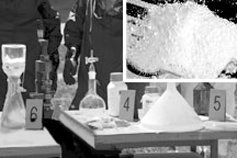
Methamphetamine and amphetamines were well-known as prescription drugs provided to soldiers and pilots during the Second World War, and their use spread out among the civilian population during the 1960s. Meth then began to be produced illicitly by motorcycle gangs, then small mom and pop operations and finally Mexican drug cartels. Methamphetamine is distributed to every corner of the US, mostly consisting of drugs manufactured in large Mexican labs. Small domestic labs (which may consist just of a two-liter bottle filled with toxic chemicals) also provide a steady supply of meth.
Meth is also manufactured in the Czech Republic for those in Europe who wish to abuse the drug. In Scandinavia and the Middle East, it’s more likely to be amphetamine that is abused–in the Middle East, this drug is distributed in pill form and goes by the name “Captagon.” In recent years, Estonia and Poland have recently joined the list of amphetamine-producing nations.
Methamphetamine is highly addictive and causes physical deterioration, paranoia, and aggressiveness, among other symptoms. Users of these stimulants fail to eat or rest, sometimes going on week-long binges of drug use.
Most of the world’s illicit supply of amphetamines is currently manufactured in East and South-East Asia. Amphetamine-type stimulants are also the greatest drug threat in this area. In 2010, 133 million amphetamine pills were seized in South-East Asia.
Ecstasy:
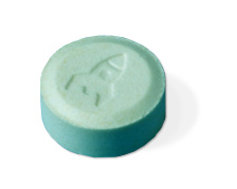
In the late 1960s, MDMA, also referred to as Ecstasy, began to be used as a psychiatric drug, and then spread out into illicit use. It was not illegal until 1985. Ecstasy has been a popular music venue drug because of the changes it creates in sensory perception and emotions. Music venues and nightclubs are now designed to complement the drug-taking experience, with flashing light shows, free light sticks that can be waved about in time to the music, and even fabric-covered walls to appear to the heightened tactile sense of the user. Many dance venues have chill rooms where a person in danger of overheating from this strong stimulant can cool off.
MDMA has resulted in anxiety, panic attacks and severe overheating that causes organ breakdown and death. MDMA can quickly become addictive for some people.
For many years, the Netherlands was the primary source of Ecstasy, but in recent years, Canada became a source country, especially for Ecstasy seized in the US. Nearly four million tablets of Ecstasy were seized at the US-Canada border in 2010.
Mephedrone:
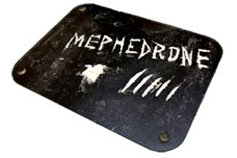
Mephedrone appeared on the illicit drug market in the UK in 2003. It was not made illegal in most European countries until later in the decade. By 2009, mephedrone was the fourth-most frequently used drug in the UK in dance venues.
Mephedrone was just the tip of the iceberg, however. Unscrupulous chemists were modifying chemical formulas just one or two molecules at a time to come up with new drugs that skirted drug laws. Whether they were safe or damaging never seemed to be an issue.
By 2010, fifteen such drugs were being monitored by the European Monitoring Council for Drugs and Drug Addiction but dozens more had already hit the market. Many of these drugs were classed as cathinones, compounds similar to those found in khat, a plant abused in Eastern Africa for its euphoric properties. The list of new drugs included mephedrone, methylone, and MDPV.
Spice:
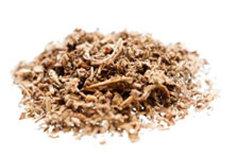
Spice was purported to be a legal replacement for cannabis and was often sold as incense in head shops. Instructions for use specifically state that the product was not for human consumption but that fooled no one. Spice, also known as K2, is composed of one or more chemicals sprayed onto herbal material. These chemicals are known only as HU-210, JWH-018 or JWH-073, among others.
Besides being legal in the US until 2012, Spice would not show up on many existing drug tests in the early days of its distribution. It found popularity among some members of the military, but this was short lived. In 2011, more than 1,500 sailors were relieved of duty after being found to be using Spice. The military had to scramble to update drug tests and institute drug abuse monitoring programs in part due to the internal crisis created by Spice abuse.
Spice was found to cause anxiety, hallucinations, psychosis, and paranoia in some users. Several deaths were associated with Spice, often because of paranoia or violence triggered by the use of the drug. But lack of drug tests for Spice in the early days of its distribution made accurate reporting on resulting deaths impossible.
Spice was made illegal in the US in July 2012.
“Bath Salts”
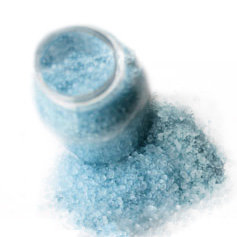
This is another case of mislabeling toxic chemicals intended for recreational use as something harmless. In this case, mephedrone, MDPV and other chemicals were labeled “for a soothing bath, not for human consumption.” But everyone knew they were going to be smoked or ingested. Head shops and convenience stores around the country began to carry them since they were legal and could not be seized by law enforcement.
But then bath salts began to be associated with horrific tales of violence and death. Like the double-murder suicide involving a man and woman who had taken bath salts, and their five-year-old son–all dead. And a young man in Louisiana who cut his throat one day and then shot himself the next because of bath salts-induced psychosis.
Bath salts have been found for sale across the US and European countries. Bath Salts were declared illegal in the US in July 2012. The Drug Enforcement Administration followed this declaration with a crackdown on synthetic drugs that spanned 31 states and resulted in the arrest of 91 people.
Resources:
- http://www.unodc.org/eastasiaandpacific/en/2011/09/global-ats-assessment-2011/story.html
- http://www.ncbi.nlm.nih.gov/pubmed/22489593
- http://www.navy.mil/submit/display.asp?story_id=66260
- http://www.navy.mil/submit/display.asp?story_id=65464
- http://www.cbsnews.com/8301-504083_162-57480956-504083/dea-31-state-bust-for-bath-salts-synthetic-marijuana/
- http://www.emcdda.europa.eu/online/annual-report/2010/new-drugs-and-trends/2
 ®
®